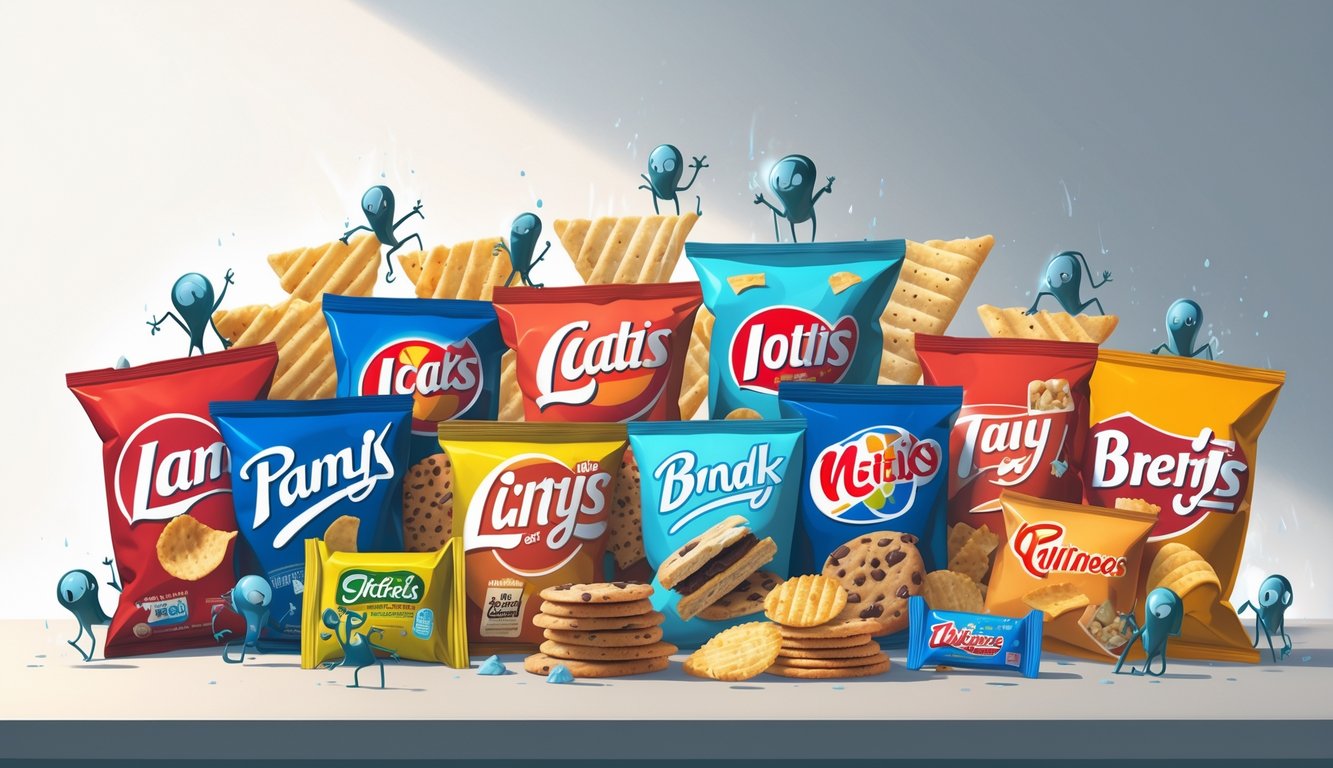
You ever stand in the snack aisle, clutching a “natural” protein bar, and wonder if you’re just getting played? I did that yesterday—scanned the label, and boom: “natural flavors,” “soy lecithin,” “partially hydrogenated oils.” Seriously, why does everything sound like it came out of a chemistry set? Trans fats by any other name, right? Snack brands are stuffing foods with weird additives, and they’re not even trying to hide it—just slapping on names that sound harmless while we’re too distracted to care. I read somewhere that most people spend five seconds glancing at ingredients. Five seconds! Honestly, I think my friend Kim does it in one; she just grabs whatever has the prettiest wrapper. Decision fatigue, she says. I call it snack roulette.
Here’s what messes with me: everyone’s panicking about saturated fat, but nobody’s whispering about carrageenan or the preservatives hiding in granola bars. “Modified food starch,” “high-fructose corn syrup,” “maltodextrin”—all that stuff just sort of slips by. Until you realize your kid’s lunchbox is basically a science experiment, or the PTA nutrition person drops a stat about allergies and digestive issues. I once found a “healthy” snack with enough sodium to rival a drive-thru burger. Not even subtle. But hey, the package had a cartoon fox, so I guess that makes it fine.
And seriously, why do seed oils turn up where you’d expect butter? Or why does “clean” granola mean “natural sweeteners” that spike your blood sugar just as fast as regular sugar? My inbox is full of parents asking how to dodge all these hidden ingredients. I just tell them: squint at the fine print, ignore the bold promises, and don’t trust anything just because it’s in the “organic” section. My old nutrition professor used to say, “If your grandma can’t pronounce it, put it back.” Maybe she was right. Or maybe she just never tried to wrestle a toddler while deciphering “polysorbate 80.”
The Rise of Additives in Popular Snack Brands
Lately, snack aisles feel like weird science museums. “Healthy” on the front, but turn it over and you’re hit with a wall of gibberish, tucked somewhere between potato starch and a vitamin that sounds like a license plate. Who actually cares about label regulations? I don’t, but someone must, right? Meanwhile, we keep shoving ultra-processed bars into our carts and pretending it’s fine.
Why Additives Are Widely Used in Snacks
Manufacturers want money, and longer shelf life means more money. That’s it. “Preserving freshness” is just a phrase, not a real thing. They want the same $3 chips to taste identical in Minnesota in January and Miami in August. The State of Snacking report says minimal-ingredient brands are trending, but brands just swap in new gums, colors, and stuff like polyglycerol polyricinoleate. My cousin’s a food chemist and swears if a snack is soft, sweet, or neon after six months, it’s basically a science project.
And when people complain, sometimes the rules change. But I still spot soy lecithin in “artisan” bars and wonder if anyone taste-tests these things or just assumes nobody’s looking. Ingredient prices jump, so companies swap in whatever’s cheapest, and suddenly your favorite snack has an “improved formula” you never asked for. And don’t even get me started on the flavor enhancers—they turn everything into a salt lick.
Types of Processed Snack Foods Most Affected
Salty snacks—tortilla chips, cheese puffs, popcorn—these are the worst. Tortilla chips alone pulled in almost $7 billion recently (here’s the data). Try finding a plain chip at a gas station that doesn’t have three stabilizers and some “natural flavor” nonsense. Granola bars? Just sugar in disguise, plus soy protein isolate. Anything mass-produced? Expect anti-caking agents.
Those “healthier” cookies and soft bars from childhood are back, now with chia seeds and a fresh crop of emulsifiers and sweeteners to cover up the new recipes. Old classics come back with “better” spins, but they’ve still got more additives than my grandma’s holiday fruitcake. Allergy-friendly? That just means a different stabilizer.
Nobody actually needs yogurt pretzels with titanium dioxide or maltodextrin (but there they are). Shelf-stable dips? I don’t think I’ve ever seen one grow mold. Maybe that’s not a good sign. Gluten-free? That trend just added a whole new batch of binders, so now even “simple” snacks read like a chemistry worksheet.
Understanding Sneaky Additives: What’s Hiding in Your Snacks?
I open a bag of “all-natural” crisps, and my brain immediately starts panicking: what’s hiding past the happy branding? Ignore the TV ads. The sketchiest stuff always hides in the fine print.
Preservatives and Their Hidden Roles
I’ll admit it, I usually skim right past the weird ingredients, only to realize later that BHA and BHT are still in a ton of snacks—especially crackers and “fit” cookies. FDA says they’re “Generally Recognized as Safe,” but Europe? Not so much. There are studies with mice, cancer links, the works.
Think you’re safe skipping jerky or nut mixes? Nope. Sodium benzoate and potassium sorbate sneak in everywhere. If your snack’s “best by” date is next year, it’s probably not nature keeping it fresh. Oh, and BHA and BHT? They keep fats from getting gross, but why do my chips still taste stale half the time?
Preservatives Table
| Ingredient | Typical Snack Use | Potential Concern |
|---|---|---|
| BHA | Chips, crackers | Possible carcinogen |
| BHT | Cereal, granola bars | EU bans/restrictions |
| Sodium Benzoate | Diet sodas, trail mix | Allergic reactions, hyperactivity reports |
My cousin claims expired gummies are fine—just chewier. I don’t know if I trust her, but I still eat them.
Flavor Enhancers and Taste Modifiers
Every time I see “natural flavors,” I play this sad little game: is it MSG in disguise? Usually, yes. MSG, autolyzed yeast extract, all that stuff creeps into “better-for-you” popcorn and flavored rice cakes.
Sometimes a snack tastes way too good. MSG, disodium inosinate, “yeast extract”—they all crank up the flavor, and suddenly I can’t stop eating. Harvard even says you build up a tolerance, so you need more to get the same kick. If a bag says “No MSG Added,” I already know to check for its sneaky cousins in the ingredients list.
Flavor enhancers aren’t just cheap tricks—they mess with your sense of how salty or sweet something is. That’s how these ingredients slip by, even on “wellness” snacks. Some people think “yeast extract” is wholesome, but after three bowls of chipotle corn snacks at 2 a.m., my face is puffy and I’m regretting everything. Nobody warned me about sodium bloat at midnight.



